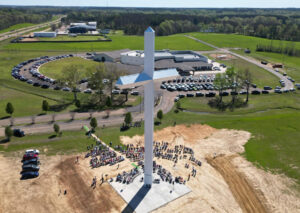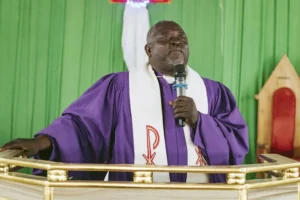

LEBANON, Tenn. (BP) – Many of us who love John MacArthur, R. C. Sproul and John Piper often ignore how systems help their churches. We forget their churches comprise thousands of people. MacArthur’s church has more than 8,000 attenders each Sunday. Churches don’t grow that large by neglecting systems. Rather, systems help them organize the growth that their powerful preaching ministries have drawn. Systems are the way they disciple the people the Lord brought to their churches. These churches don’t cross their fingers that people get connected, start giving and learn biblical theology. They plan for it. They organize around it.
That is the purpose of systems.
What is a system? A system is an organized approach or framework for how to move people from point A to point B. Systems are the structures for how we execute tasks and achieve goals. Every church has systems. This is important to grasp: every church has systems. The question is: are they intentional and effective?
Here’s an example. Every church wants new people to return and become members. This is called assimilation. How do people assimilate into the church? A church without a formal plan still has a system. Maybe they wait for people to ask about joining. Some hold periodic classes when they sense the need for a membership push. Others hope new people find a Sunday school class or small group but offer no process for getting there. This is a system, it’s just a terrible one. The odds are low for guests to assimilate.
Healthy shepherds take responsibility to lead the flock in the right direction, rather than leaving it to chance. They plan. They build systems and make the process clear.
Here are eight different systems every church should implement and evaluate for effectiveness:
1. Worship gatherings
What is your process for planning gatherings? How do you organize the service? How do you communicate with and prepare those with responsibilities in service? The goal is to magnify Christ and edify the saints. Do we have a set routine for doing this well?
2. Evangelism
We want our people to witness to people in the community, but how are we equipping them to do so? What training, resources and help are we providing for people to share their faith? Create an intentional plan for doing this and monitor whether it is happening.
3. Assimilation
This process moves someone from new to your church to a committed member. If you leave this process to chance, you will not assimilate people into the life of your church. Nail down the steps (and mini steps), then communicate it.
At my church, our process for moving someone from Guest (Point A) to Member (Point D) is:
Point A is the worship gathering. Most guests enter the orbit of our church through worship. We ask people newer to our church to fill out a Contact Card toward the end of every service. This is a mini step that leads to Point B. We contact these folks during the week and invite them to attend our Welcome to TJC class.
Point B is the Welcome To TJC. We hold this class each week at our 11 a.m. service. We outline the church’s mission and vision, highlight our discipleship focus, mission work and other ministries. They get to ask questions and familiarize themselves with TJC. Our goal is to move them from this class into a group.
Point C is a Life Group or MDWK Class. We want them to be in discipleship relationships so they can grow in their faith. We track people through each step of the process. Our staff tracks it. Until they take that step, we continue working that direction.
Point D is Covenant Membership. Attenders can become members after they have been in a Life Group for three months. This process lets our leaders (Life Group leader) see their life and faith up close. This protects us from people joining the church living in some habitual sin we wouldn’t know about otherwise. If the Life Group leader affirms, they can become a member.
There is no perfect system. But if you plan it and work it, it can be effective.
4. Discipleship
How do we help believers grow and mature in our church? What is our intentional process for “teaching them to obey everything” Christ commanded? Your assimilation process should get them to community (Groups, Sunday school). This is where most discipleship happens.
5. Giving/generosity
How/when do we teach about giving? What methods or mechanisms do we have for giving? – offering in service? – online giving? – app? – automated? Do you follow up with first-time givers? Do you teach people to automate their giving?
6. Serving
How do you help people discover their spiritual gifts? How do you involve people in the church’s ministry to use those gifts? Again, good shepherds do more than hope people know what to do or where to go.
7. Leadership development
How do you develop leaders? What process do you have for putting people in leadership positions? Pastors and governing boards should determine these details and execute the plan.
8. Overall strategy
How is the church’s vision set? What values drive the church? What is our philosophy of ministry and methodology? Why do we do what we do? How do we know we’re hitting the mark? Clarity on these things is crucial for the body.
Systems are not bad. In fact, they are helpful tools for shepherding the flock God has charged us to oversee. We don’t want to leave things to chance. Hoping people figure out how to become a member or serve in the church is irresponsible. We have much to learn from the churches of our theological heroes, but it’s more than just their theology.

















